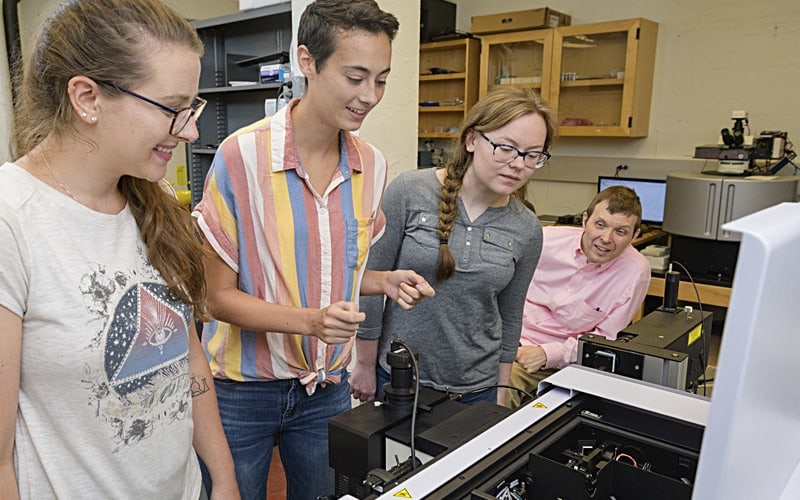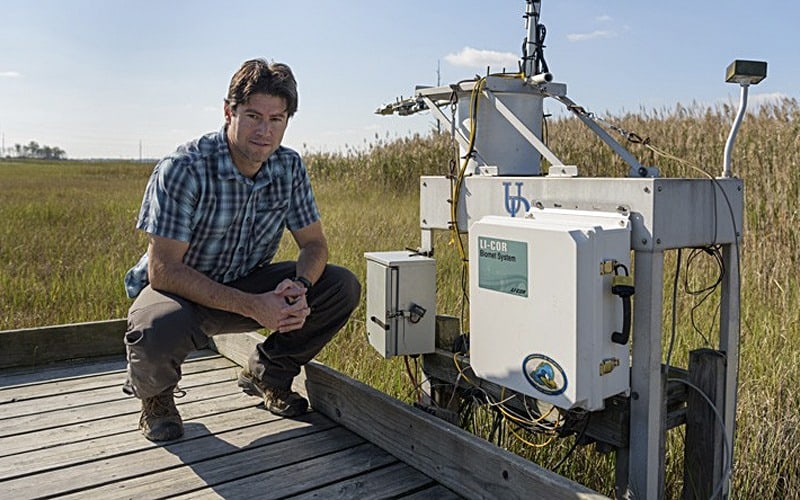 Research & Discovery
Research & Discovery
A Blog Devoted to UD Innovation, Excellence and Scholarship
Research & Discovery
A Blog Devoted to UD Innovation, Excellence and Scholarship
Scoping out new science
ABOVE: Rachel McCormick (second from left) gives fellow doctoral student Devon Haugh (left) and Wofford College undergrad Savannah Talledo some training in how to use the new microscope, as Prof. Karl Booksh looks on. | Photo by Evan Krape
New microscope with dual capabilities supports multitude of studies
“UD is excited to add this important and state-of-the-art new tool to our suite of instruments for examining materials at high resolution,” said Charles G. Riordan, vice president for research, scholarship and innovation. “With this capability, UD faculty, students and staff will be able to drive research and education forward in a wide array of fields, from engineering to physical sciences to art conservation.”
The new microscope will help researchers go where they couldn’t before. Previous scopes just didn’t have the super-high resolution and chemistry-uncovering power this one has.
“This microscope will allow scientists to see objects 10,000 times smaller than the diameter of a human hair — plus provide detailed information about both the surface of a material and its chemistry,” said Karl Booksh, professor of chemistry and biochemistry and the rallying force behind UD’s successful proposal to the National Science Foundation. NSF came through with a $558,228 grant from its Major Research Instrumentation and Chemistry Research Instrumentation programs and the Established Program to Stimulate Competitive Research (EPSCoR). The UD Research Office also helped support the cost of the instrument, which was purchased from Horiba, a leading provider of analytical and scientific measurement systems.





